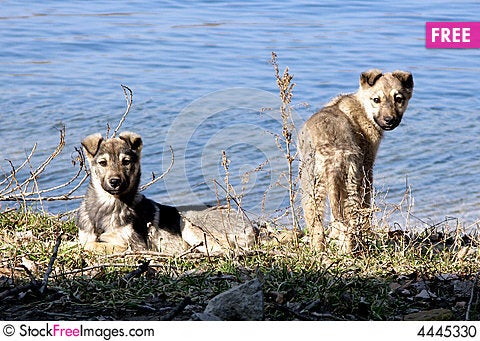♦ We Speak a Dog’s Name to Get His
Attention.
A dog’s name is his primary way of being alerted that you are
trying to communicate with him. In the training chapter of the book (page 235)
and the section on communication between man and dog (page 148), you will
discover that we say a dog’s name before any command, before anything we want
to give him, even to warn him of danger. So it puts both you and your dog at a
disadvantage not to have a name ready to start applying as soon as he enters
your life.
♦ Try Out a Few Different Names and See Which One
Suits Him the Best.
Experiment with two or three names that you think might work
and see which one you feel suits him best. With a puppy you can call him by
absolutely anything you want—it’s more the way you call him that will get the
response. With a youngster his response to a name is really not as important as
it is for an older dog whose name you may be changing (see chart below on “Naming Tips”). It is your tone of
voice—the energy and up-inflection when saying his name—that will catch his
attention. If you give the puppy a treat when he looks up or makes eye contact
or comes over when he hears his name, then you are teaching him that his name
is a good thing.
♦ If the Dog Comes with a Name, You Can Change It.
If you are inheriting, adopting or rescuing an older puppy or
mature dog, don’t feel obligated to keep his name unless you like it. If you
know the dog’s name—and do not like it—before you adopt him, then you may want
to choose two or three possibilities for a replacement name. You can test which
one suits him best, or which one he seems to respond to more. Let’s say he was
called Killer before and you like the name Satchmo (after considering the
name-choosing tips in the chart below). In order to switch him over to the new
name, you call him with a hyphenated name: you simply say Killer-Satch, putting
emphasis on the “Satch.” Reward him with a treat when he responds to the new,
hyphenated name. If you’re using a bright cheery tone it shouldn’t take more
than a few days for the dog to look up at you when you say just “Satchmo”—and
when he does, give him a ticker-tape parade. You want to give a jackpot treat
when you get a quick response in a challenging learning situation like this.
“Jackpot” is part of a theory of training reinforcement, which is described
fully on page 240 of the training chapter, but basically it’s a high-value
treat plus several more as booster treats.
♦ Move On if You Don’t Get a Fairly Fast Response
to the New Name.
It could be that the replacement name you’ve chosen does not
resonate with the dog—which you’ll know because he doesn’t put one and one
together and come alive to the sound of that name. If that is the case, then
try your second choice in the same way—say it by hyphenating it with the dog’s
old name. You’ll soon see if he responds to your second choice.
Copyright © Tracie Hotchner – Originally appeared in The Dog Bible: Everything Your Dog Wants You to Know by Tracie Hotchner

No comments:
Post a Comment